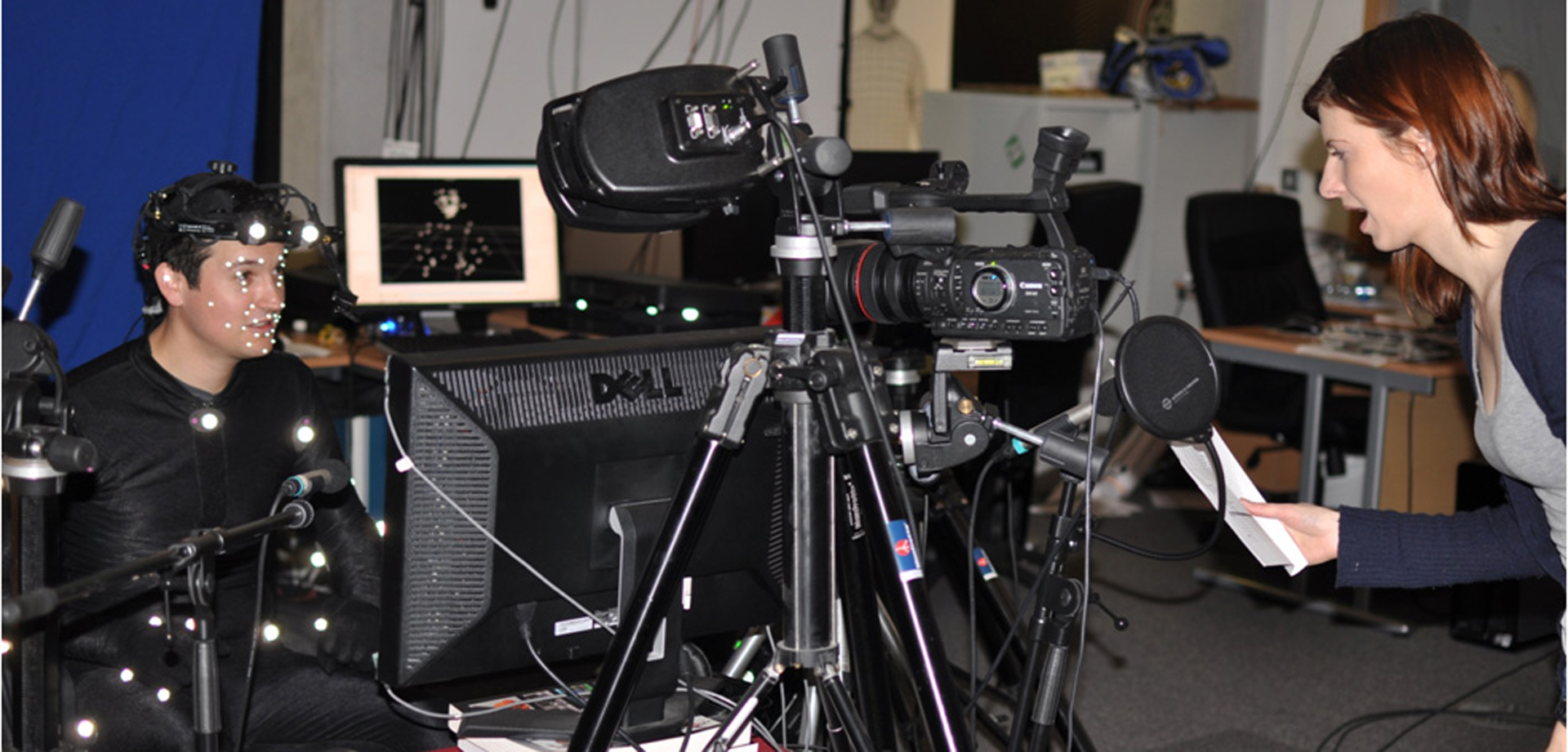“Render me real?: investigating the effect of render style on the perception of animated virtual humans” by McDonnell, Breidt and Buelthoff
Conference:
Type(s):
Title:
- Render me real?: investigating the effect of render style on the perception of animated virtual humans
Presenter(s)/Author(s):
Abstract:
The realistic depiction of lifelike virtual humans has been the goal of many movie makers in the last decade. Recently, films such as Tron: Legacy and The Curious Case of Benjamin Button have produced highly realistic characters. In the real-time domain, there is also a need to deliver realistic virtual characters, with the increase in popularity of interactive drama video games (such as L.A. Noire™ or Heavy Rain™). There have been mixed reactions from audiences to lifelike characters used in movies and games, with some saying that the increased realism highlights subtle imperfections, which can be disturbing. Some developers opt for a stylized rendering (such as cartoon-shading) to avoid a negative reaction [Thompson 2004]. In this paper, we investigate some of the consequences of choosing realistic or stylized rendering in order to provide guidelines for developers for creating appealing virtual characters. We conducted a series of psychophysical experiments to determine whether render style affects how virtual humans are perceived. Motion capture with synchronized eye-tracked data was used throughout to animate custom-made virtual model replicas of the captured actors.
References:
1. Bartneck, C., Kanda, T., Ishiguro, H., and Hagita, N. 2007. Is the uncanny valley an uncanny cliff? In Proceedings of the 16th IEEE International Symposium on Robot and Human Interactive Communication (RO-MAN07), 368–373.Google Scholar
2. Buller, D., and Burgoon, J. K. 1996. Interpersonal deception theory. Communication Theory 6, 203–242.Google ScholarCross Ref
3. Chaminade, T., Hodgins, J., and Kawato, M. 2007. Anthropomorphism influences perception of computer-animated characters’ actions. Social Cognitive and Affective Neuroscience 2, 206–216.Google ScholarCross Ref
4. Chen, H., Russell, R., Nakayama, K., and Livingstone, M. 2010. Crossing the ‘uncanny valley’: adaptation to cartoon faces can influence perception of human faces. Perception 39, 3, 378–386.Google ScholarCross Ref
5. Curio, C., Breidt, M., Kleiner, M., Vuong, Q. C., Giese, M. A., and B?lthoff, H. H. 2006. Semantic 3d motion retargeting for facial animation. In APGV ’06: Proceedings of the 3nd symposium on Applied perception in graphics and visualization, 77–84. Google ScholarDigital Library
6. DePaulo, B. M., Lindsay, J. J., Malone, B. E., Muhlenbruck, L., Charlton, K., and Cooper, H. 2003. Cues to deception. Psychological Bulletin 129, 74–118.Google ScholarCross Ref
7. Ekman, P., and Friesen, W. V. 2003. Unmasking the face: a guide to recognizing emotions from facial clues. Malor Books.Google Scholar
8. Geller, T. 2008. Overcoming the uncanny valley. In IEEE Computer Graphics and Applications, vol. 28, 11–17. Google ScholarDigital Library
9. Han, S., Jiang, Y., Humphreys, G. W., Zhou, T., and Cai, P. 2005. Distinct neural substrates for the perception of real and virtual visual worlds. NeuroImage 24, 928–935.Google ScholarCross Ref
10. Hanson, D., Olney, A., Prilliman, S., Mathews, E., Zielke, M., Hammons, D., Fernandez, R., and Stephanou, H. 2005. Upending the uncanny valley. In Proceedings of the National Conference on Artificial Intelligence (AAI05), 24–41. Google ScholarDigital Library
11. Hodgins, J., O’Brien, J., and Tumblin, J. 1998. Perception of human motion with different geometric models. IEEE Transactions on Visualization and Computer Graphics 4, 4, 307–316. Google ScholarDigital Library
12. Hodgins, J. K., J?rg, S., O’Sullivan, C., Park, S. I., and Mahler, M. 2010. The saliency of anomalies in animated human characters. ACM Transactions on Applied Perception 7, 4, 1–14. Google ScholarDigital Library
13. K?hnken, H., Gleicher, M., and Pighin, F. 1989. Behavioral correlates of statement credibility: theories, paradigms and results. Criminal behavior and the justice system: Psychological perspectives, 271–289.Google Scholar
14. Levi, S. 2004. Why Tom Hanks is less than human; while sensors cannot capture how humans act, humans can give life to digital characters. In Newsweek 650, 305–306.Google Scholar
15. MacDorman, K. F., Green, R. D., Ho, C. H., and Clinton, T. K. 2009. Too real for comfort? Uncanny responses to computer generated faces. Computers in Human Behavior 25, 695–710. Google ScholarDigital Library
16. Mar, R. A., Kelley, W. M., Heatherton, T. F., and Macrae, C. N. 2007. Detecting agency from the biological motion of veridical vs animated agents. Social Cognitive and Affective Neuroscience Adcance Access 2, 3, 199–205.Google ScholarCross Ref
17. McDonnell, R., J?rg, S., McHugh, J., Newell, F., and O’Sullivan, C. 2009. Investigating the role of body shape on the perception of emotion. ACM Transactions on Applied Perception 6, 3, 14:1–14:11. Google ScholarDigital Library
18. Mori, M. 1970. The uncanny valley. Energy 7, 4, 33–35.Google Scholar
19. Nowak, K. L., and Biocca, F. 2003. The effect of the agency and anthropomorphism on users’ sense of telepresence, copresence, and social presence in virtual environments. Presence 12, 5, 481–494. Google ScholarDigital Library
20. Perani, D., Fazio, F., Borghese, N. A., Tettamanti, M., Ferrari, S., Decety, J., and Gilardi, M. C. 2001. Different brain correlates for watching real and virtual hand actions. NeuroImage 14, 749–758.Google ScholarCross Ref
21. Reeves, B., and Naas, C. 1996. The media equation: How people treat computers, television, and new media like real people and places. In Stanford, CA, CSLI Publications. Google ScholarDigital Library
22. Saygin, A. P., Chaminade, T., Ishiguro, H., Driver, J., and Frith, C. 2012. The thing that should not be: predictive coding and the uncanny valley in perceiving human and humanoid robot actions. Social Cognitive and Affective Neuro-science 7, 4, 413–442.Google ScholarCross Ref
23. Slater, M., and Steed, A. 2002. Meeting people virtually: Experiments in shared virtual environments. In The social life of avatars: Presence and interaction in shared virtual environments, 146–171. Google ScholarDigital Library
24. Steptoe, W., Steed, A., Rovira, A., and Rae, J. 2010. Lie tracking: social presence, truth and deception in avatar-mediated telecommunication. In CHI ’10: Proceedings of the 28th international conference on Human factors in computing systems, 1039–1048. Google ScholarDigital Library
25. Thompson, C. 2004. The undead zone: Why realistic graphics make humans look creepy. Slate.Google Scholar





